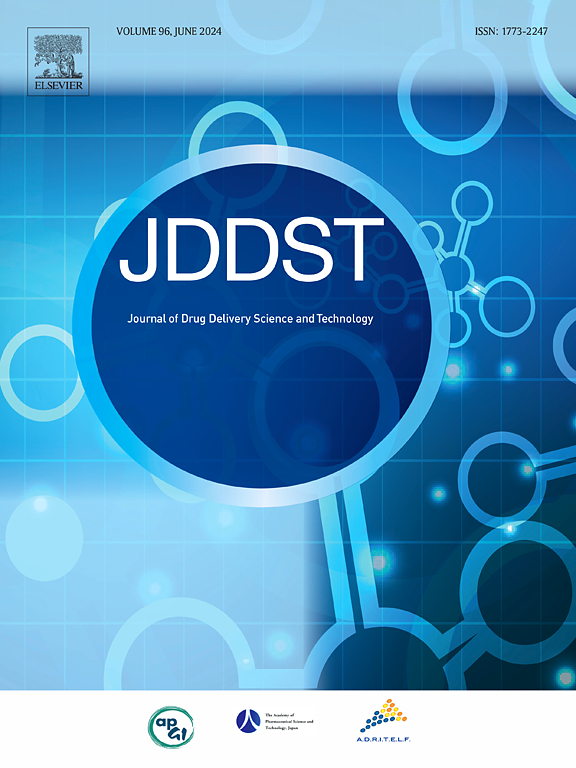Characterization and Anti-Alzheimer’s Effect of Donepezil-Loaded Chitosan/Polyethylene Glycol Nanospheres
IF 4.5
3区 医学
Q1 PHARMACOLOGY & PHARMACY
Journal of Drug Delivery Science and Technology
Pub Date : 2025-04-01
DOI:10.1016/j.jddst.2025.106887
引用次数: 0
Abstract
Among numerous dysfunctions associated with Alzheimer’s disease, cholinergic deficiency has been postulated as evidently influential. Despite donepezil’s ability to decelerate disease progression, drug’s pharmacokinetics interfere with its efficacy and, therefore, pharmacological outcome. Given the recent advancements in the pharmaceutical nanotechnology, the associated shortcomings can be resolved by using nanomedicine. Herein, this project developed donepezil-loaded polymeric nanospheres consisted of chitosan (Cs) and chitosan/polyethylene glycol (Cs/PEG) composition that provided controlled drug release for 12 h. The morphological investigation showed well-defined spherical nanospheres with internal solid core covered by a porous surface. The lowest mean particle size observed in virgin Cs/PEG nanospheres was 136.6 ± 17.5 nm. Molecular, structural, and thermal investigations proposed high compatibility between the drug and matrix. The Korsmeyer-Peppas kinetic release model was observed in drug-loaded nanosphere types. In vitro cytosafety was confirmed with a MTT assay on human neuroblastoma SH-SY5Y cell line. Additionally, the potential anti-Alzheimer efficacy of the impregnated nanospheres were demonstrated on in vitro Aβ1-42-induced Alzheimer model. The overall conclusion suggests the feasibly, safety, and efficacy of the developed drug delivery system.

求助全文
约1分钟内获得全文
求助全文
来源期刊
CiteScore
8.00
自引率
8.00%
发文量
879
审稿时长
94 days
期刊介绍:
The Journal of Drug Delivery Science and Technology is an international journal devoted to drug delivery and pharmaceutical technology. The journal covers all innovative aspects of all pharmaceutical dosage forms and the most advanced research on controlled release, bioavailability and drug absorption, nanomedicines, gene delivery, tissue engineering, etc. Hot topics, related to manufacturing processes and quality control, are also welcomed.

 求助内容:
求助内容: 应助结果提醒方式:
应助结果提醒方式:


